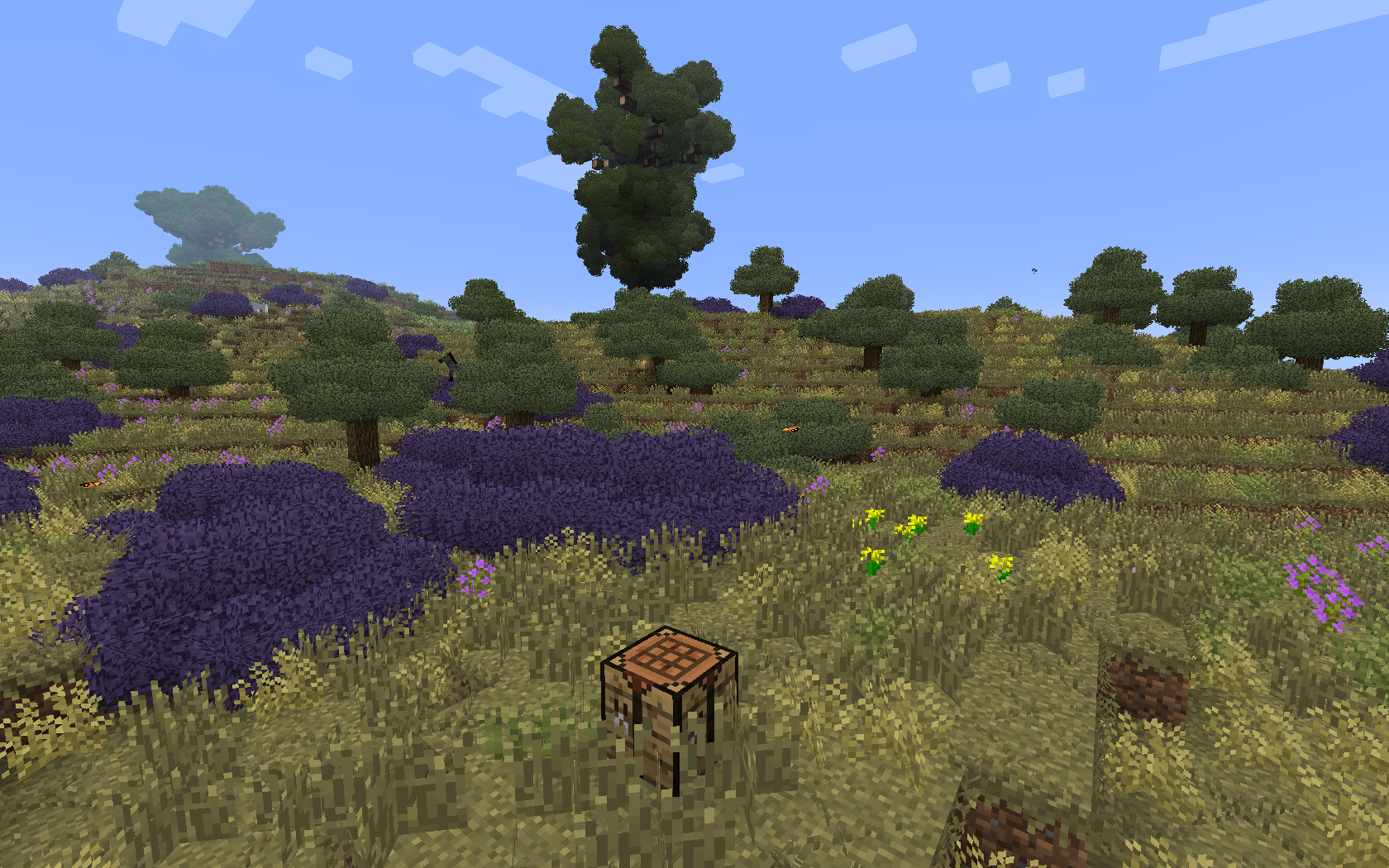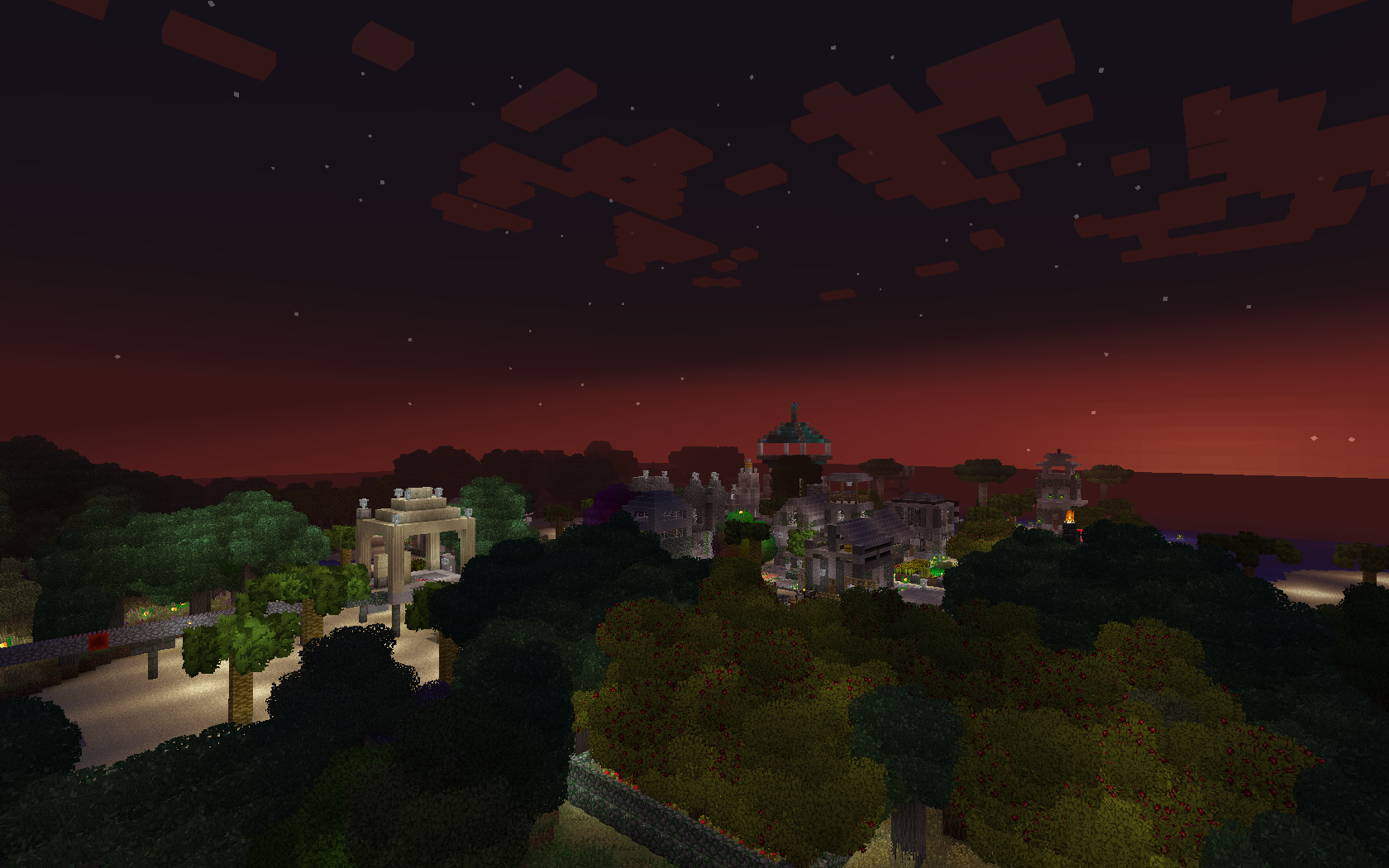Crafting Autonomy in Minecraft
Without having to probe very deeply into what it offers as a game, Minecraft can offer an interesting opportunity to experiment with the concept of autonomy. I’ve written a little bit before about individual realization during discussions on concepts such as Maslow’s hierarchy in Minecraft before. On top of self-realization, the game offers interesting insight into such widespread narrative concepts as “the self-made man”, and other concepts related to autonomy and how the concept is positioned against socialization.
As the current Hunger Games project evolves, many of us are primarily interested in seeing what kind of behaviours will be created by the arenas we design. Many of our conversations, at this point in the project, center on whether or not the arena we’ll create will promote players to work together in teams or strike out on their own.
Autonomy in the Aristotelian Sense
Autonomy is a contentious topic to begin with. To start, I am working with the – admittedly limited – definition Aristotle put forth in Ethics:
[…] in this sort of model of autonomy, what defines an action as autonomous is seen as its point of origin; it must have an ‘immaculate conception’, as it were, from within the self. (Grimshaw 90)
Aristotle’s vision of autonomy was based on the principles rationality and self-sufficiently, and renounced any sort of dependency on others. This fits in well with the initial vision of Minecraft, where a player emerges anew into an Eden (or hellscape, depending on the biome) and has to rely on scrounging for materials to survive and eventually thrive.
I start with autonomy as a framework to approach this Hunger Games in Minecraft project because I’m fundamentally interested in player motivation – I’m interested in uncovering some of the reasonings that govern what in the education (and sometimes gamification) business is called intrinsic motivation.
Perhaps no single phenomenon reflects the positive potential of human nature as much as intrinsic motivation, the inherent tendency to seek out novelty and challenges, to extend and exercise one’s capacities, to explore, and to learn. (Ryan M. Ryan and Edward L. Deci 70)
I want to know why players play games the way they play them. Intrinsic motivation is defined as performing an action because one enjoys the activity itself. It seems to make sense that desire is related to intrinsic motivation – we do what we do because we want to do it.
So why do we want to do the things we want to do in a (Hunger Games) Minecraft game?
Autonomy versus Socialization/Socializing
One of the first issues encountered with the Aristotelian ideal of autonomy is that as a theory it doesn’t translate well into practice. In life, it is impossible to be born, survive infancy, grow up, and live as an adult in a vacuum. Even our most private, inner selves are shaped by the relationships that surround us. Even a person’s autonomy has to be carefully developed during the socialization in their childhood.
Autonomy and socialization/socializing can be imagined to be on different ends of a spectrum. Without neglecting the importance of social bonds, we can hazard a guess to say that even acts done for the sake of social coherence are autonomous acts. Not every action that is influenced by external or social forces is automatically coercive.
Given the right circumstances, a tension can emerge in examining socializing versus autonomy: between what we are supposed to want to do and what we actually want to do. Without delving too deeply into the land of psychology and philosophy (and the murky depths between) let’s bring this back to Minecraft.
Why Do We Do What We Do In (Hunger Games) Minecraft
Unlike vanilla single-player Minecraft, multiplayer Minecraft brings out a very tangible opportunity for cooperation and socializing. Hunger Games Minecraft adds a certain gladiator/bataille royale wrench into the mix.
(Sidenote: In my experience many multiplayer Minecraft servers tend to end up looking like warzones, even if the option of peace and cooperation is ostensibly available. One of my favourite articles from 2012 is actually a post on PC Gamer which describes a truly devastating resource war on an experimental Minecraft server. It turns out that the experiment never took place and that the story was crafted as a hoax – but resource-depletion and all-out-aggressive multiplayer shenanigans are actually pretty common on multiplayer servers, a fact that was recorded by the minDcraft project at TAG in early 2015.)
By design, however, the Hunger Games from the novel/movie series are made to emphasize a specific kind of socializing and autonomy – the kind where one’s allies are also explicitly one’s adversaries. It creates an interesting reversal of the definition of autonomy seen above (which is usually understood to be born from socialization). In the Hunger Games, any sort of socializing is done with a shared understanding that it is done only to enhance the individual’s chances of staying alive and winning the game. Every player participating in the Hunger Games understands to forego the niceties common to most social groupings: the goal is to win, by any means necessary.
What if, however, winning the Hunger Games on a Minecraft server is not one’s intrinsic desire? What if winning the Games is not enough for some players? Unlike the book series, the players aren’t actually going to die, only their Minecraft avatars perish and they lose the game.
We are designing this Minecraft arena for players who are going to be playing because it is a class assignment. I am assuming that they may not be intrinsically motivated to play Minecraft in general, though it is possible some may be. It’s going to be interesting to see how these players react to an arena on top of reacting to Minecraft in general.
I am very interested in seeing how players who are not battle-hardened Minecraft players react to the challenges of the game and our arena. I am also interested in seeing how players react to arena traps or challenges that have been crafted to either foster competition or cooperation.
The arena
If I’ve learned anything from playing way too much Minecraft, it’s that social environments are usually more important than the actual physical layout of the land. We’re spending a lot of time thinking about traps, layouts, underwater or lava-sunken terrains: while these have an undisputed effect on the atmosphere and gameplay, I’m wondering as to their efficacy in influencing player’s responses with regards to their motivations.
Without the usual resource-gathering/hoarding motivations that are usual to Minecraft (not to mention not wanting to get blown up by creepers), it’s going to be interesting to see how players find motivation to play the game. But I suppose the motivation of not getting shoved into lava or murdered by your fellow players is also quite motivating. We’ll just have to see.
Works Cited
Deci, E. L.; Ryan, R. M. “Self-determination theory and the facilitation of intrinsic motivation, social development, and well-being”. American Psychologist 55. 2000. pp 68–78
Grimshaw, Jean. “Autonomy and Identity in Feminist Thinking” Feminist Perspectives in Philosophy. Indianapolis, IN: Indiana University Press. 1988. pp 90-108


